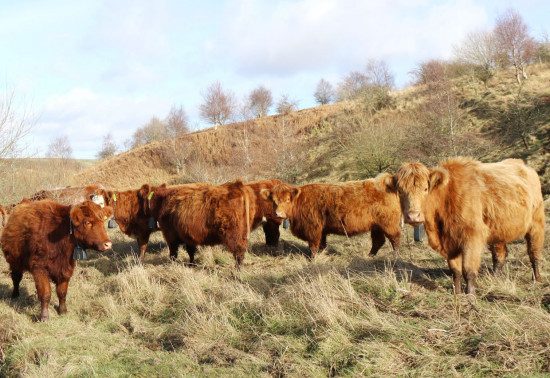Cows will be kept under control with GPS collars linked to satellites, in a trial of virtual fence technology at Glentrool, Dumfries and Galloway- the first in Scotland by Forestry & Land Scotland (FLS).
The system, pioneered by Norwegain company Nofence, combines a digitally mapped fenceline with the GPS mapping of the cows movement around the site to signal the collars worn by the cows when the animals wander too close to the boundary. The collars emit an audible warning that gradually increases in pitch but which diminishes when the cows turn back and stops once they are safely back within the invisible boundary. If the cow does not turn around the collar gives the animal a mild electric pulse equal to that from a standard electric fence.
It means that the cattle can safely wander – potentially across very large areas of many hundreds of hectares – without the need for fences or barbed wire.
Speaking about the project, Kim Kirkbride, Environment Forester said:
“We already use cattle in several of our forests to promote ‘conservation grazing’ such as in Mabie forest where they’re used to help create habitats for rare butterflies.
“If this trial is successful, it will allow us to consider a wide range of conservation grazing across our landholdings such as working over large areas of open hillside where we could not possibly build and maintain physical fencing.
“It will also enhance environment and biodiversity outcomes on habitats already managed by grazing livestock.”
The technology is particularly useful to promote conservation grazing and is being used for the first time at a locaton next to Glentrool Oakwoods (SSSI), in Dumfries & Galloway.
The cattle will be used to ‘poach’ the ground, breaking up the bracken rhizomes and cropping back the grass, allowing other seeds and plants to take root and – over time – promote self-seeded broadleaf regeneration from the Oakwoods. This will help to increase the range of this important, native woodland, which is home to special plants, birds and insects, some of which are rare.
Early discussions with prospective graziers have also highlighted that this technology could have additional benefits in improving livestock care and helping graziers to manage their operations more efficiently.
QR codes linked to the virtual fencing show the pasture boundary as well the animals’ location, so walkers can check before they go in to an area, to see where the cattle are.





